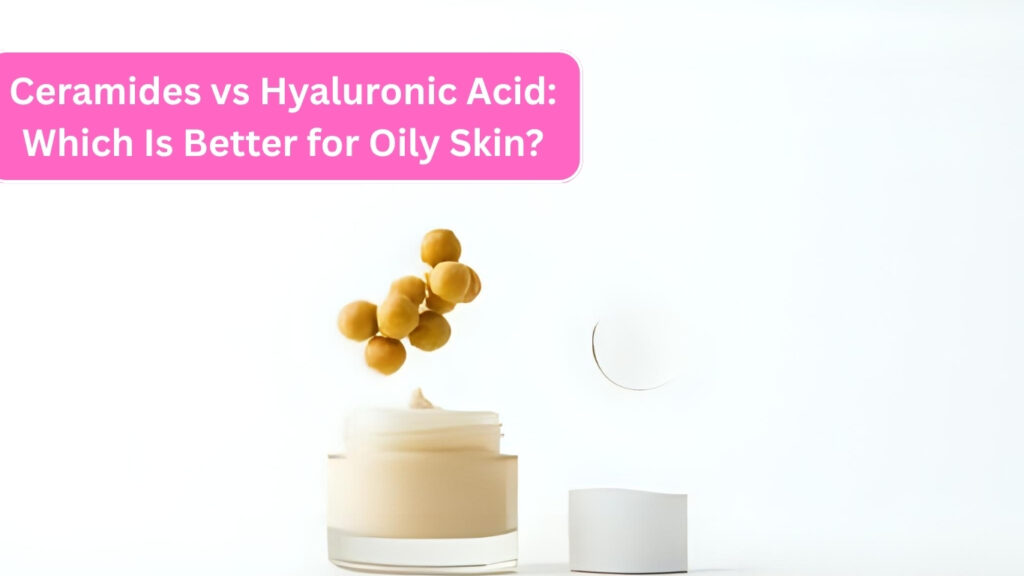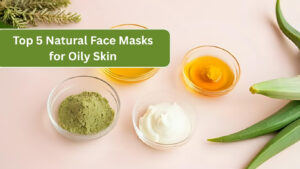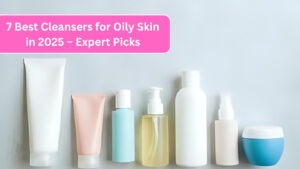When it comes to hydrating oily skin, the last thing you want is a heavy cream that leaves you looking slick. Yet your skin still needs moisture—and that’s where two superstar ingredients come in: ceramides and hyaluronic acid. Both promise hydration without greasiness, but they work in very different ways. In this article, we’ll compare ceramides vs hyaluronic acid, explain how each benefits oily skin, and guide you on which to use (or whether you need both) for a balanced, resilient complexion.
1. What Are Ceramides?
- Definition: Lipid molecules naturally found in the skin’s stratum corneum (outer layer).
- Function:
- Act like “mortar” between skin cells (“bricks”), preventing moisture loss and blocking irritants.
- Reinforce the skin’s barrier, reducing sensitivity and oil overproduction triggered by dehydration.
- Sources in Products: Ceramide NP, AP, EOP—look for multi-ceramide complexes for best results.
- Key Benefits for Oily Skin:
- Barrier repair: Seals gaps, preventing trans-epidermal water loss (TEWL).
- Oil regulation: When your barrier is intact, your skin is less likely to overcompensate by producing extra sebum.
- Non-comedogenic: Lightweight creams or serums won’t clog pores.
2. What Is Hyaluronic Acid?
- Definition: A naturally occurring polysaccharide that holds up to 1,000× its weight in water.
- Function:
- Draws moisture from the environment and deeper layers into the surface of the skin.
- Plumps fine lines and smooths texture without oiliness.
- Molecular Weights Matter:
- High MW (1,000–1,400 kDa): Films surface moisture—good for immediate plumping.
- Low MW (<100 kDa): Penetrates deeper for long-term hydration.
- Key Benefits for Oily Skin:
- Lightweight hydration: Gel or water-based serums feel non-greasy.
- Instant plump: Smooths pores and fine lines, giving matte but supple look.
- Compatibility: Works with almost any other active (retinoids, acids, niacinamide).
3. Head-to-Head Comparison
| Feature | Ceramides | Hyaluronic Acid |
|---|---|---|
| Primary Role | Barrier repair & lipid replenishment | Humectant, draws and retains water |
| Texture in Formulations | Light creams/lotions | Serums, essences, gels |
| Key Benefit for Oily Skin | Controls sebum via barrier support | Instant, oil-free plumping |
| Longevity of Effect | Long-term barrier health | Immediate + short-term unless layered |
| Best Paired With | Fatty acids, cholesterol, other lipids | AHAs/BHAs, retinoids, antioxidants |
4. How They Work Together
- Synergy: Ceramides rebuild and strengthen the barrier; hyaluronic acid floods that barrier with moisture.
- Routine Placement:
- Cleanse & Tone
- Hyaluronic Acid Serum: Apply on damp skin to draw in moisture.
- Ceramide Cream: Seal in hydration and strengthen barrier.
- Moisturizer + SPF
Pro tip: Layering HA first maximizes its pull, and ceramides lock that moisture in, preventing TEWL all day.
5. Choosing the Right Product
- For Barrier Repair Priority:
- Look for serums or creams where ceramides rank in the top five ingredients.
- Avoid formulas with heavy emollients like shea butter if you’re acne-prone.
- For Instant Hydration Boost:
- Opt for a low-viscosity HA serum (molecular-weight blend).
- Check for added humectants (glycerin, sodium PCA) for extended effect.
6. Common Myths Debunked
- “Oily skin doesn’t need moisture.” False—dehydrated skin triggers more oil.
- “Hyaluronic acid clogs pores.” False when used in water-based formulas; always choose non-comedogenic.
- “Ceramides are only for dry skin.” False—everyone’s barrier relies on ceramides, oily skin included.
7. Incorporating Into Your Skincare Routine
| Step | Product Example | Timing |
|---|---|---|
| Cleanser | Salicylic Acid Gel Cleanser | Morning & Evening |
| Exfoliant | 2% BHA Toner | 2–3×/week (Evening) |
| Treatment Serum | 1% Hyaluronic Acid Serum | Morning & Evening |
| Barrier Repair | Ceramide-Niacinamide Moisturizing Lotion | Morning & Evening |
| Moisturizer + SPF | Oil-Free Matte Sunscreen SPF 50 | Morning |
FAQs
Q1: Can I use both ceramides and hyaluronic acid daily?
Yes—apply HA first on damp skin, then ceramides to seal. Both improve oily skin without heaviness.
Q2: Will layering hydration worsen my oiliness?
No—proper layering with lightweight formulas actually balances sebum production.
Q3: How soon will I notice results?
Barrier strength from ceramides shows in ~2–4 weeks; HA’s plumping is immediate but needs consistent use.
Q4: Are these ingredients safe during acne treatments?
Absolutely—both soothe and hydrate, reducing irritation from actives like retinoids or benzoyl peroxide.
Q5: Can I find products that combine both?
Yes—look for serums or creams labeled “hydrating barrier repair” containing both ceramides and hyaluronic acid.





